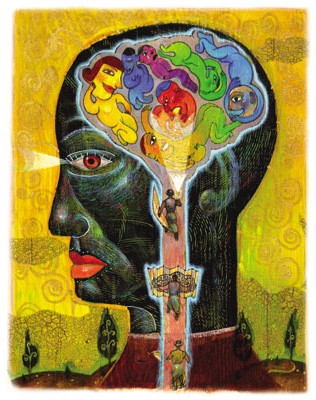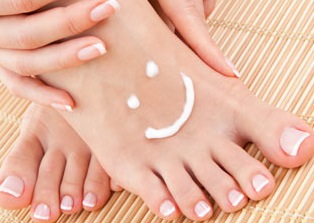
As a patient educator and nutritionist, I often hear the following from frustrated patients: Just when they think they have a handle on what they are supposed to do to be healthy, the information changes. For example, up until a recent study was published, those of us over 50 were assured that if we moderately cut back our portions; decreased our calories; and exercised for thirty minutes, four to five times a week, we could keep at bay the extra body fat that creeps in after menopause.
Countless women dutifully reduced their calories and did their 30-minute routines daily, only to feel that there was “something wrong with them.” Although the “experts” said it was the right way to control weight after 50, the formula didn’t work for their bodies and they didn’t maintain their desired weight level. Recent research published in the “Journal of the American Medical Association” has now thrown out the half-hour-a-day exercise formula.
Here’s the rub: No longer is a half hour of exercise deemed adequate to increase the metabolic furnace that is slowed by the loss of estrogen. We now have to exercise a minimum of one hour per day and really watch every calorie we put in our mouths, especially carbohydrates, which we may want more than ever at this age for the serotonin surge they provide.
This new information comes from a Harvard study on physical activity and weight gain in women over 50. This throws out the previous recommendations. As is stated in the Harvard study and experienced by many of us who are post-menopausal, women over 50 generally do not lose the weight they want with just a half hour a day of exercise. This is one more example of information frustration in an information-saturated culture.
Estrogen, as every female is aware, is that amazing hormone that is a metabolic calorie burner as well as a reproductive hormone. It keeps our skin and heart healthy while producing “pheromones” for attraction. What is an important, non-researched but logical factor regarding losing weight and keeping it off after 50 is what our individual bodies tell us is right for our unique metabolism and body type. We need to ask ourselves: what do we know about our own weight loss and weight gain pattern that could be more important than the “weight loss expert’s” advice?
Now that we are past the age of procreation and our body is no longer protecting us against many of the maladies that can accompany the loss of reproductive hormones, what do we know about our own metabolic profile and how food and exercise affects our body weight — and what do we also know about what it is in our lives that makes us feel like our optimal, best self?
Here are some more important questions to ask ourselves:
- What do I know about how I gain weight?
- What do I know about how I lose weight?
- Do I eat when I’m stressed?
- Do I lose weight when I’m stressed?
- Does eating play a dominant role in my daily routine?
- What am I willing to give up to get the body weight I want?
- Do I feel my food choices need to improve?
- What is my personal experience with exercise?
- What kind of exercise do I enjoy?
- Am I willing to make the time to take care of myself?
- What are my health priorities?
- What are my ego priorities?
- What keeps me from being the weight I want to be?
- What helps me feel my best and makes me happy or passionate about life?
The issue of weight loss, from a general observation of ourselves, our peers and our friends, appears to be connected to a number of factors in our lives above and beyond how much exercise we do daily. Rarely do we see an energetic, productive, organized individual (man or woman) who struggles with weight issues, even after 50, because they are often focused on their external interests and passions. Often these folks spend less time eating and getting pleasure from food and more time enjoying their hobbies or activities and getting pleasure out of the active, fulfilling lives they live.
One of the weight loss “secrets” I have learned over the years in my practice as a clinical nutritionist is that when individuals are excited, creative, interested and passionate about their work, their relationships, learning, doing or being, the issue of a naturally right body weight resolves itself.
We are often overly focused on the sensory experience and enjoyment of food as a mainstay for satisfaction and pleasure. Just as often, when something else catches our attention and we focus our creative and passionate energies into things we love, the issue of fulfillment comes from creativity or service to others, rather than our food intake.
For more whole health discussions like this, listen to my weekly radio show Living Above The Drama available on iHeartRadio.
 This cold and flu season it is likely with the recall of so many over the counter cold remedies, that home-made cold remedies will make a comeback this winter. One of the best known and oldest home-made remedies for “the winter miseries” is chicken soup.
This cold and flu season it is likely with the recall of so many over the counter cold remedies, that home-made cold remedies will make a comeback this winter. One of the best known and oldest home-made remedies for “the winter miseries” is chicken soup.
 An article appearing in the Social Cognitive and Affective Neuroscience journal (SCAN) on the research study being done at the University of Pennsylvania School of Medicine discusses the difference in how the male and female brain responds differently when dealing with stress.
An article appearing in the Social Cognitive and Affective Neuroscience journal (SCAN) on the research study being done at the University of Pennsylvania School of Medicine discusses the difference in how the male and female brain responds differently when dealing with stress.

 It seems today we have a large menu of things to choose to worry about, from the economy to the latest flu epidemic heading our way. It is no wonder this is called the “age of anxiety” or that we are losing our grip on happiness and it is being replaced with anxiety. If you are female, the news is even more disconcerting. Science demonstrates that women are more prone to worry – that is at least more than men are.
It seems today we have a large menu of things to choose to worry about, from the economy to the latest flu epidemic heading our way. It is no wonder this is called the “age of anxiety” or that we are losing our grip on happiness and it is being replaced with anxiety. If you are female, the news is even more disconcerting. Science demonstrates that women are more prone to worry – that is at least more than men are.



